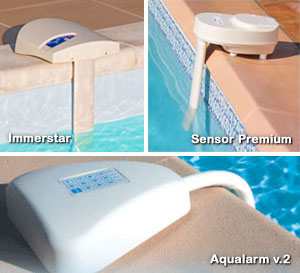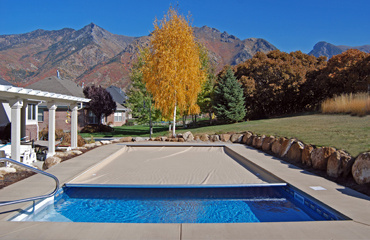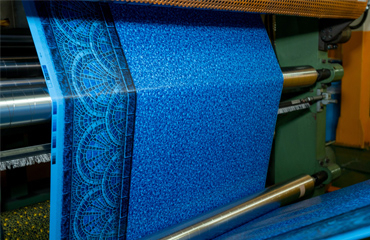From the 15th April 2009, the new French standard NF P 90-307-1 applies to pool alarms for the immersion and perimetric detection by optical beams. These systems, characterized in this new standard, are used, among others, in the framework of the obligations prescribed by the 3 January 2003 law concerning swimming pools safety.
What has changed?
What does the new standard say in comparison with the previous one? The instructions for the consumer have been completed, the requirements relating to power supply, the main unit and the detector as well as those relating to the signal of the alarm system have been modified. The automatic reactivation function for immersion detection systems (which was already required in the previous standard) is now tested in laboratory according to the procedure defined in the new standard.
Among the main changes, the following should be noted:
Article 2: it is prohibited to manufacture, import, put up for sale, sell, store in order to sell or for free of cost distribution, or to distribute free of cost immersion detection alarms that do not meet the conditions fixed by this decree.
Article 4: the swimming pool immersion detection alarms comply with a model that is certified to be compliant to the safety requirements defined in appendix 1. This certification is issued following a sample examination conducted by an organisation from a State that is member of European Community or another Country that is part of the European Economic Zone agreement or Turkey, accredited according to the EN/ISO 17025 norms by Comité français d'accréditation (COFRAC), or by an organisation that has signed multilateral agreement within the framework of European coordination of accreditation organisations for monitoring the products mentioned in article 1.
The manufacturer sets-up a quality assurance system that complies with the ISO 9001 norm or is based on a unit control system for production that guarantees that the manufactured products comply with the model that is certified to be compliant to the safety requirements.
For the purpose of this decree, the phrase "alarm model" implies the alarms made by the same manufacturer that have the same design and same technical characteristics.
Any change in the model of the alarm that may effect the ability of this model to meet the safety requirements defined in appendix I are subject to a new compliance certificate delivered after a sample examination conducted in the conditions stated in paragraph 1.
Article 6: the provisions of this decree are not an obstacle to the marketing of products that have been legally manufactured or marketing products in other member States of the European Community or Turkey, or the products that are legally manufactured in a State that is part of the agreement that established European Economic Zone, ensuring a safety level that is equivalent to the one that is required by this decree.
Article 8: immersion detection alarms whose conformity with the NF P 90-307-1 or NF P90-307 norms and its amendment A1 is certified by a test-report prepared by an external organisation or the importer can be marketed for a period of six months from the date on which this decree has come into effect.
Therefore, this decree establishes three essential principles:
Every manufacturer or In-charge for marketing immersion alarms whether it is French, European or from other countries is subject to the same rules:
In conclusion, the introduction of this new standard is a significant step forward into the swimming pool world. Thanks to it, alarms reliability is once again reinforced and consumers can benefit from enhanced safety!
What has changed?
What does the new standard say in comparison with the previous one? The instructions for the consumer have been completed, the requirements relating to power supply, the main unit and the detector as well as those relating to the signal of the alarm system have been modified. The automatic reactivation function for immersion detection systems (which was already required in the previous standard) is now tested in laboratory according to the procedure defined in the new standard.
Among the main changes, the following should be noted:
- Applicable tensions of the power supply must be compliant to standard NF C 15-100, section 702.
- Standby autonomy (without alarm starting) must be at least 20 days for batteries refilled by photovoltaic energy, 6 hours for batteries refilled by mains (the maximum refilling time of batteries, after a 6 hours discharge, must be 48 hours) and one year for batteries.
- The presence of a mains power supply must be signalled in a visible manner. Any fault or absence of emergency back-up supply must activate a failure warning system.
- In the case of a weak power supply, alarm systems not on mains power must be provided with a failure warning system which must be maintained until the supply returns to normal and must be able to last a minimum of one month.
- After a temporary deactivation due to using the swimming pool or after a failure is resolved, the system must feature a function for automatic reactivation.
- Signals: 5 functioning states, in normal use, have been defined. A colour code has been implemented :
- Green > safety mode engaged
- Red > safety mode deactivated
- These lights must be visible from the pool and on permanent display (not necessarily continuous).
- During automatic reactivation time, the adult in charge must supervise the pool. Successful reactivation must be shown by a red light turning green and an audio signal. As a reminder, supervision by the adult in charge is, of course, an obligation while the pool is being used.
- Additional information (installation and user guides, general safety advice, etc.) for the consumer must be indicated on the packaging.
 |
Article 2: it is prohibited to manufacture, import, put up for sale, sell, store in order to sell or for free of cost distribution, or to distribute free of cost immersion detection alarms that do not meet the conditions fixed by this decree.
| "Decree number 2009-873 dated 16 July concerning the safety of swimming-pool alarms that work by immersion detection has completed the legislation about this matter." |
The manufacturer sets-up a quality assurance system that complies with the ISO 9001 norm or is based on a unit control system for production that guarantees that the manufactured products comply with the model that is certified to be compliant to the safety requirements.
For the purpose of this decree, the phrase "alarm model" implies the alarms made by the same manufacturer that have the same design and same technical characteristics.
.jpg) |
Article 6: the provisions of this decree are not an obstacle to the marketing of products that have been legally manufactured or marketing products in other member States of the European Community or Turkey, or the products that are legally manufactured in a State that is part of the agreement that established European Economic Zone, ensuring a safety level that is equivalent to the one that is required by this decree.
Article 8: immersion detection alarms whose conformity with the NF P 90-307-1 or NF P90-307 norms and its amendment A1 is certified by a test-report prepared by an external organisation or the importer can be marketed for a period of six months from the date on which this decree has come into effect.
Therefore, this decree establishes three essential principles:
Every manufacturer or In-charge for marketing immersion alarms whether it is French, European or from other countries is subject to the same rules:
1 - All products distributed in the French market must comply with all the provisions of the decree dated 16 July 2009.Click here to read the full decree
2 - The manufacturer or the In-charge for marketing must get its products checked to ensure that its products are compliant and this by an accredited laboratory and guarantee the compliance of all its products (from technical point of view, the laboratory must base its tests on the NF P 90 307-1 norm but will definitely complete it by verification of brands and then deliver a type certificate).
3 - The manufacturers must set-up an ISO 9001 type quality assurance system or unit control system for production.
In conclusion, the introduction of this new standard is a significant step forward into the swimming pool world. Thanks to it, alarms reliability is once again reinforced and consumers can benefit from enhanced safety!










